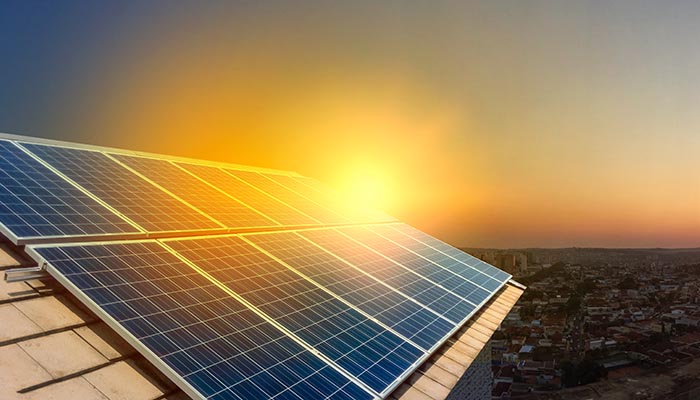
Updated November 29, 2021
Solar panels are one of the most popular sources of renewable energy that have come to market. As the world begins to look for a mainstream renewable energy source, solar panels stand as the leading option in how the future will be powered.
Providing sun harnessed power that transfers to electricity, solar panels utilize the sun’s rays to create a completely clean source of energy. This eliminates the need for climate endangering and gas-burning energy sources.
The Quick Answer
If you are looking for a short answer to how solar panels produce electricity: The process of harvesting the energy from the sun starts with the sun radiating sunlight during the day. The solar cells within the panel are activated, causing an electron flow through the panel that is then stored to be used as electricity. The electricity is converted from the sun’s power source, to be more applicable for everyday energy needs.
While most people understand what solar panels are to an extent, many do not understand the inner workings of the panels, and how they actually create electricity that can be used in regular day energy applications.
What is in a Solar Panel?
Solar panels can come in a few size variations for different application uses. They all contain largely the exact same compilation of materials that create the panel itself. Metal frames and wiring, glass paneling, silicon-created solar cells, and an electrically conductive rubber seal for the silicon. These combine to create the main factory of sorts within each cell.
While most of these pieces are self-explanatory, the most important and potentially confusing aspect is the silicon-made solar cell, mined silicon. Mined silicon is used as a conductor.
Pure silicon is heated to burn off the oxygen attached to it. This continues to go through a long chemical process to end up as a grouping of cells. These cells are covered with an anti-reflective coating before being placed and sealed within the solar panels themselves.
This reflective coating helps increase the amount of sunlight stored and decreases the waste from the process. Many solar cells are connected by “electrical contacts”.
Finally, the cells are sealed “into a rubber or vinyl acetate, framed in aluminum and covered in glass or plastic”. (Source: LetsGoSolar)
Solar Panel Installation
Once the solar panel itself is finalized, it must be framed and placed in a location visible to the sun’s rays, fastened to withstand harsh winds and other hazardous weather. It must also be connected to the other panels in the field and the main energy receiver.
The Electricity Production Process
With our panel installed, let’s talk about the main production. Solar panels produce power by absorbing energy and sunlight during the day, which passes through the currents of the cells and turns them into direct current energy. This is passed through an inverter which converts it to usable alternating current electricity, similar to the electricity that comes out of wall outlets.
This energy can be used to power your home, stored in a connected solar battery you can pull from during or after the sun has gone down for the day, or sent back to the larger energy grid your home or building could be attached to. (Source: EnergySage)
The Positive Benefits, and the Future of Solar Panels
Solar panels provide dozens of added benefits to their users, but the main three factors are the ability to produce off-grid electricity, long-term cost benefits, and the knowledge you are using a positive, and clean energy source.
- Off-grid electricity: Off the grid electrical sources and power are a main bonus for solar panels. By not requiring costly and sometimes unavailable normal electricity connected via electrical lines to a grid, this makes it possible to power a home that is much more remote from society, as well as power a normal home when a grid may go offline due to severe weather or accidents.
- Long term cost: while solar panels have a much higher upfront cost, the long term effects and lower costs based on not requiring connection to a local standard line from an electrical provider. This over years and years, results in a lower monthly spend after the initial buy in.
- Renewable source: by knowing the energy someone is producing is clean and renewable, it can provide brighter and more positive outcomes for the climate and the world. On a more practical financial level, it is possible more and more legislation that ups the cost of less renewable energy sources causes a mad dash for companies and homeowners to purchase solar panels, which could cause a spike in the price.
The future of solar panels is, pun intended, very bright. Through the clean energy creation process within the panel, to the mass implementation that continues to occur year over year, they will surely only get more cost-efficient, and more accessible, as time goes on.
Sources:
https://www.mrsolar.com/what-is-a-solar-panel/
https://www.energysage.com/solar/solar-101/
https://www.paradisesolarenergy.com/blog/solar-panels-what-makes-them-tick



